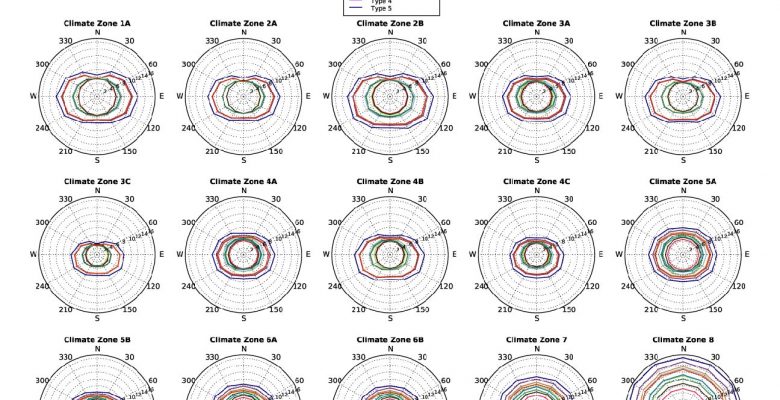The facade is one of the most significant contributors to the energy budget and the comfort parameters of any building. Control of environmental factors must be considered during the design process. High-performance facades need to block adverse external environmental effects and maintain internal comfort conditions with minimum energy consumption. The purpose of this research was to analyze thermal behavior and energy performance of different facade types, as well as impacts of climate change on facade performance. The study was conducted by modelling conductive heat transfer in seven different exterior wall types, considering conventional and thermally improved opaque and glazed systems. Conventional facade systems included brick cavity wall, rainscreen facade with terracotta cladding, rainscreen facade with glass-fiber reinforced concrete cladding and a conventional curtain wall, while thermally improved systems included rainscreen facade with thermal spaces, rainscreen facade with thermal isolators and a curtain wall with thermally broken framing. Heat transfer and thermal gradients through these systems for four exterior environmental conditions were simulated, considering outside temperatures of 90°F, 60°F, 30°F and 0°F. Also, heat transfer coefficients (U-values) were calculated and compared to determine thermal performance. Impacts on energy use were also investigated, where energy usage was modeled for an office space enclosed with the analyzed facade types for all U.S. climate zones and 12 orientations, and for window-to-wall ratio of 20 and 40 percent, using historical weather data. The results show relative performance of analyzed exterior wall types, in terms of thermal performance and energy usage. Then, future climate conditions were considered, where the impacts of climate change on changing weather patterns were investigated. Specifically, predicated climate change weather files for the years 2050 and 2080 were used to model energy usage for the office space enclosed with analyzed exterior wall types. The results show the impacts of climate change on the energy performance, and show that the energy usage is increased for all investigated wall types and in almost all climates.
This article originally appeared in Vol 08.02 of the Perkins+Will Research Journal. CLICK HERE to see the whole article.

